#pitch canker
Explore tagged Tumblr posts
Photo
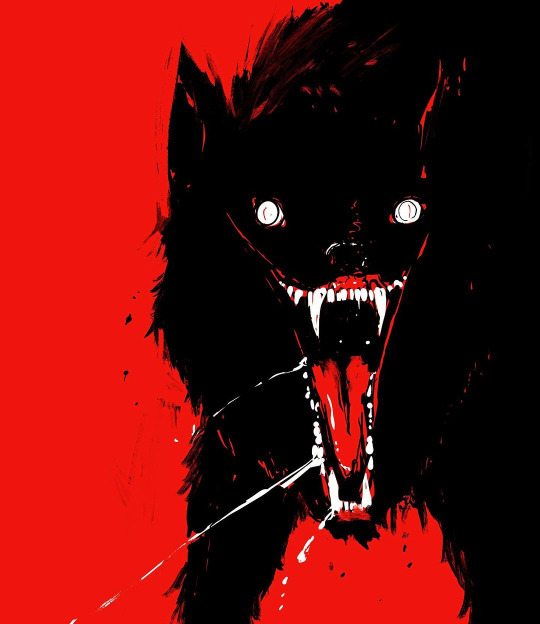
Pitch Canker
1K notes
·
View notes
Text

THE EIGHTH CIRCLE OF HELL: FRAUD
2K notes
·
View notes
Text

Little Pitch Canker style piece i did of Elster from Signalis
I tried limiting myself to just 20 minutes so its not the best
im probably going to clean this up a bit and fix the anatomy at somepoint
#pitch canker#signalis#elster#elster signalis#fanart#signalis fanart#lstr 512#signalis lstr#style study
31 notes
·
View notes
Text

Lyrics by The Buttress
Art by Pitch Canker
4 notes
·
View notes
Text

Pitch canker inspired drawing of a creepy female.
3 notes
·
View notes
Text

Drew another silly thing a few days ago, again inspired by Pitch Canker
0 notes
Text

It's pretty early, but Happy Easter everyone.
1 note
·
View note
Text

decided to try and experiment a bit the other day and try doing a more horror oriented piece!! for my first time going for this kind of vibe i'm pretty happy with how this came out!
#horror art#creepy art#spooky art#my art#original art#[been studying pitch canker's works for a while to try and figure out how to make scarier art!]#[his videos are fantastic at breaking down what makes art scary and i learned a lot from them]#[highly recommend them if youre trying to work on making horror art!]#scopophobia tw#body horror tw#ask to tag
3 notes
·
View notes
Photo

pitch canker
795 notes
·
View notes
Text

BENT OUT OF SHAPE
3K notes
·
View notes
Note
Hey Mike! First off, it makes me so happy to see you out there fighting with your writer friends to ensure they receive a decent living wage for the amazing work that they do.
As for my question, I would love to hear about some of the inspiration for making Before I Wake. It and Absentia were the last two of your films that I watched, and BIW just absolutely destroyed me. No other movie, including and especially a horror flick, has ever made me bawl like a baby like that. The entire tone of the film is so spot-on, and the climax of the nightmare monster “dissolving” from its evil form after being embraced…. To me that scene just perfectly encapsulates what it’s like to be a parent, and human; sometimes we just need someone to hold us and let us know things will be all right. We spend so much of our time making sure that our children feel loved and cared for, that sometimes we forget about ourselves. And you just fucking nailed it, my dude.
Like I said, I would LOVE to read any backstory or inspiration that you have for this film! It’s so beautiful and underrated.
On the WGA front, don't be too impressed with me - I mean, I'm a professional writer, I've been a member of the WGA since Absentia, so I'm out there fighting for myself as much as everyone else.
But on the Before I Wake front, you know I very rarely get asked to talk about this one, so I'm happy to... fair warning for another long post!
Before I Wake was originally titled Somnia, which is latin for "dreams." It was part of an unofficial trilogy of sorts, comprised of Absentia, Oculus and Somnia. All three of those movies were meant to work together as a thematic triptych.
Ultimately, Before I Wake was brutally sabotaged by its own studio, who drastically undermined it creatively and then destroyed any hope of a meaningful release. It remains a particularly heartbreaking chapter of my career... but a film I have and will always have tremendous affection for.
A lot of people think that Somnia was made after Hush and Ouija: Origin of Evil, just before Gerald's Game, but this is entirely incorrect. It was actually the second "real" movie I ever made, and was actually shot before Oculus was even released.
The basic premise of Somnia focused around a little boy whose dreams manifested physically in the world around him, and was an original concept I carried around for a few years before Oculus got picked up by Intrepid Pictures. In fact, I've talked about my first meeting at Intrepid, where I pitched a few ideas that were rejected... Somnia was the first one I pitched. Trevor Macy opted to pursue Oculus that day, but he ended up producing Somnia right after.
This unofficial "latin trilogy" seemed to fit together well. Absentia was a somber and bleak look at the loss of hope, Oculus was more thrilling dive into the labyrinth of past trauma, and Somnia was meant to take that loss and trauma and end the triptych on a note of hope and healing.
In fact, the script for Somnia was written before Oculus was greenlit. On the page, it was my favorite of the three. I was very taken with the story of little Cody and his personal boogeyman, and of the revelation at the end of the story... that with understanding, even the most monstrous of our fears can lose their destructive power.
Cody's birth mother had died of cancer, and he had seen her just before her death. That final image of her, as well as a misunderstanding about the pronunciation of the word "cancer" had led to the creation of a monster in his mind, who he called the "Canker Man"... a gaunt figure who took away people that he loved. When he finally learns the truth about his monster, and about his mother, he begins to understand it all... and the monster loses its awful powers as empathy and understanding take root.
While Absentia finished its festival rounds and Oculus inched its way toward production, Somnia was my first script taken out to market by my new agency. I had signed with APA just as Intrepid engaged me on Oculus, which was my first studio writing and directing job. Jeff Howard and I finished our first draft of Oculus and turned it in to Intrepid, and immediately turned around and started writing Somnia.
The script got some interesting attention. While some of the more mainstream horror companies balked at the emotional ending and preferred a story that was "more about a boy and his monster" than the emotional wrap-up we insisted on, others understood it right away.
Elijah Wood and his producing partner Daniel Noah sought me out when they read the script. We met for drinks in Venice and I was absolutely starstruck, and we've remained friends ever since.
Jada Pinkett Smith was another big fan of the script, which led to a surreal afternoon at her stunning home where we talked about the story at length and watched an early cut of Oculus in her home theater. Will Smith joined us toward the end of the meeting, and I had a difficult time speaking.
I've written before about the drama surrounding Oculus' premiere and eventual sale to Relativity Media, so I won't rehash that now, but as Oculus raced toward release, Trevor Macy at Intrepid made an offer to produce Somnia for Relativity and I eagerly accepted. My first "real" movie was going to be released wide in theaters, and the same studio was going to double-down on me - Somnia was greenlit by Relativity for a big domestic theatrical release. We'd pre-sell our foreign territories on this promise, and they eagerly snatched the movie up. This was my own Hollywood dream, coming to life.
It wouldn't work out that way. In fact, Somnia would turn out to be the first nightmare of my career.

It started well enough. We had filmed Oculus in Daphne, Alabama, taking advantage of an aggressive tax rebate. We would do the same with Somnia, bringing back a lot of my Oculus crew and shooting in and around Fairhope. We began shooting in the fall of 2013, less than a year after we'd wrapped Oculus.
We hit the ground running. Very little time had passed since we wrapped Oculus, and the movie hadn't come out yet, so at first it felt a lot like we were just picking up where we left off.
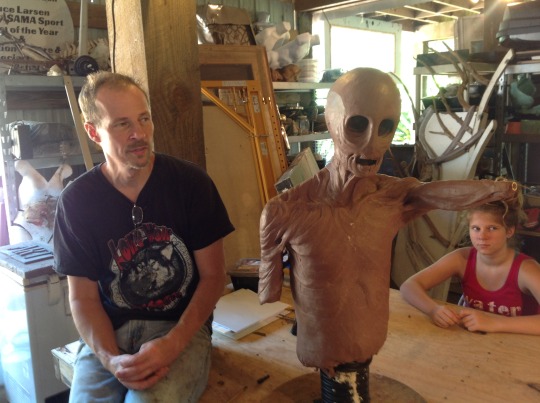
Bruce Larsen, who also carved the Oculus mirror, working on a prototype of the Canker Man.
We had casting challenges. I was still a relatively unproven director, my first studio film hadn't been released, and this was an ambitious script. After a lengthy search (driven by foreign pre-sales, a process I knew nothing about and now quite detest), Kate Bosworth signed on to play Jessie, and Thomas Jane - who I admired greatly from his recent work in The Mist - joined the production as Mark. (Funny story - Tom arrived with hair down his shoulders, and vehemently didn't want to cut it. That disagreement put us off on an awkward foot, and I ultimately conceded the point to him... though I do regret that now.)
The major discovery was 7 year-old Jacob Tremblay as Cody. Jake had only made one movie before this, he had a small role in The Smurfs 2. His self-tape audition came out of nowhere and we knew was a a phenomenal talent. Right after we wrapped, I got a call that he was being considered for a movie called Room, and we shared some footage to help him get the part (that movie would establish him as one of the biggest and most sought after child actors in the world... but we had him first.)
We were committed to practical effects wherever possible, and creating a striking suit for our monster. It all felt like it was going to work. But the shoot would prove to be much more challenging than we anticipated.
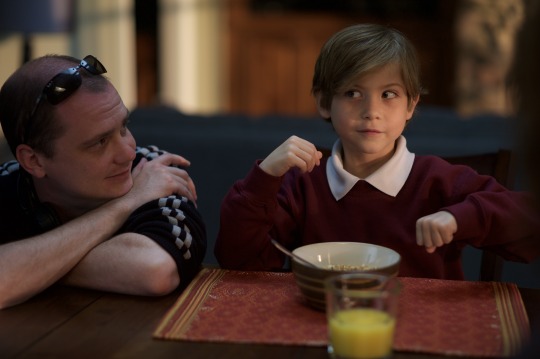
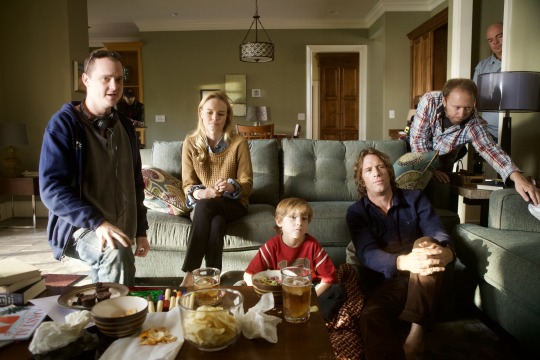
The shoot itself was challenging for the typical reasons. There was a little creative tension on set with particular actors, we didn't have enough money to pull off our more ambitious visual moments, and we were forced to remove several production days at the last minute, throwing our schedule into a bit of chaos.
But none of these issues were particularly unusual for a lower budget film, and while it was more challenging and frustrating than Oculus had been, overall the shoot was just fine. I felt that our third act was pretty drastically under budgeted, and what was scripted to be a deep dive into a child's imagination was stripped down to a few vines on the walls and some moths... but other than that, I don't really have much to complain about.

(Fun fact: it was also the first time I would work with Annabeth Gish. We were fast friends, and though she was only with us for a few days, I knew we'd end up working together again.)
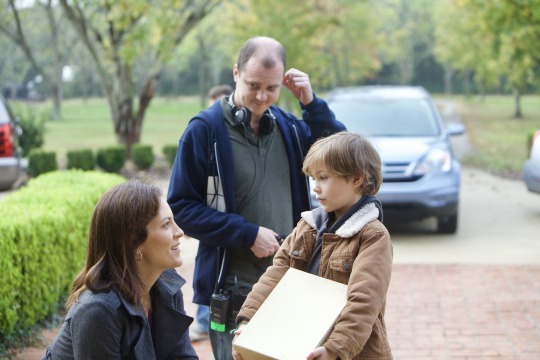
We wrapped the movie, I got to editing, and all seemed fine. It was a unique story, much less horror-centric and much more of a fairy-tale. This was, of course, by design. There was a delicate vibe to the whole thing, anchored on Jacob's arresting performance, and a shadowy magic. It felt innocent, wondrous, and ultimately cathartic.
Then, Relativity got their first look at the cut, and the problems started in earnest.
We had been clear (and aligned, I'd thought) about what kind of movie this was. But almost immediately, despite these conversations, the studio began to push the film more and more toward being a traditional horror movie.
We had designed a practical monster in the Canker Man. Our creature was tactile, practical, and - we believed - appropriately simple. After all, it was meant to have come from the mind of a child.
The studio kicked hard, and the directive came down to try to make the monster "much scarier."
There wasn't a lot we could do; we'd shot what we'd shot, after all. The decision was made to take our footage of our practical monster and drastically alter it using visual effects.
The Canker Man would be digitally warped and molded into a skeletal, grinning creature. The visual effects artists would be using footage that wasn't captured with the intention of being altered that way, so a lot of the artifice would be obvious. He'd become a little rough around the edges. We told ourselves that this would be okay... it was a dream, after all.

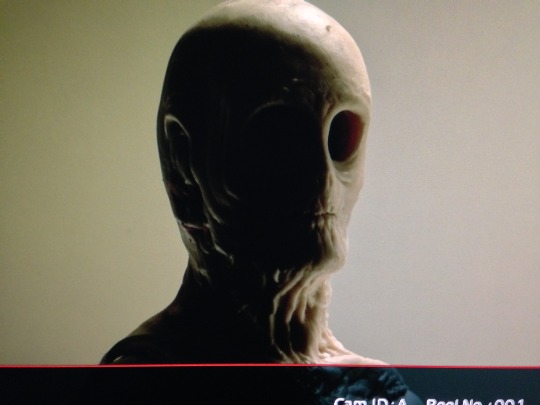
Early camera tests of our practical Canker Man suit

The final VFX-enhanced monster This began to nudge our monster away from our core concept. While our practical suit would always need some help from VFX, this was now tilting into an area that strayed from the true identity of the creature.
Another major sticking point was the plot itself.
In the movie, Cody's adopted mother Jessie is shocked to find a physical manifestation of her deceased son, Sean, after Cody sees his picture. She then goes about trying to "rebuild" her dead son in the imagination of her new foster child, hoping to see and interact with him more... "I just want to hear his voice."
This morally questionable exploitation of Cody was, to put it mildly, the entire point of the story. Jessie goes too far, and when she finally resorts to drugging Cody to force him to sleep in the hopes of seeing her lost son, he is unable to wake up from a nightmare and her husband is killed.
Jessie spends the rest of the film clawing her way back to redemption, and having to atone for what she's done, all while finally focusing on Cody's past and healing instead of her own.
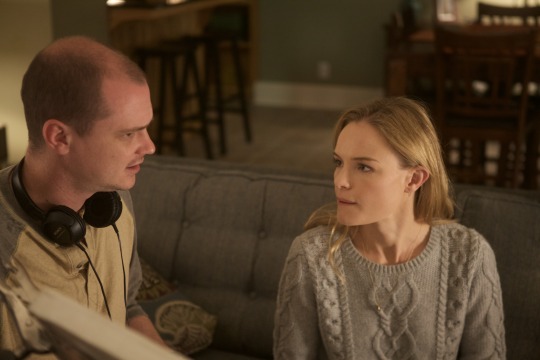
As a character, Jessie does things we do not agree with, and they have serious, permanent consequences. And the moral murkiness of this was, frankly, the point.
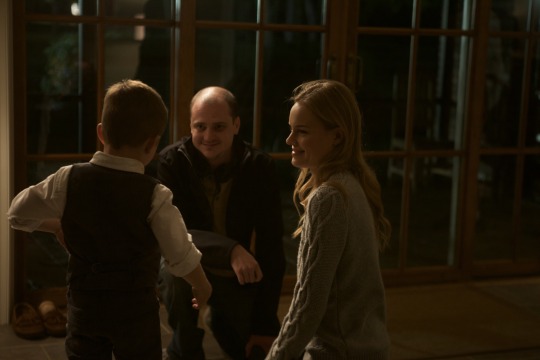
The studio was flinching hard. "It makes her unlikeable," they argued. There was a push to try to back off of this, and to pull the punch... sure, she could exploit him somewhat, but they wanted to pull it back. Kate Bosworth's performance began to be altered in the cutting room, flinching away from some of the more decisive choices in favor of a more watered-down, morally generic heroine.
This middle ground would prove to be ill-advised.
As we were battling over the edit, something else happened. Oculus was released in theaters in April 2014.
If the movie was a huge hit, it would mean I would likely win more of these arguments, and Somnia would be restored to something closer to my vision. If the movie bombed, the studio could (and likely would) run ramshot over Somnia, twisting it into a more generic studio horror story and jettisoning things they didn't quite understand.
Ultimately, the movie performed... moderately. It was kind of right in the middle. It wasn't a failure, but it wasn't a hit either. Both sides dug in. And suddenly, Somnia was being twisted into something between two tones.
Citing the "disappointing" performance of Oculus (which, frankly, did just fine), the studio insisted that we write and shoot some additional "scares". Among them was one of the worst studio notes I'd ever receive (well, at least until I started working for Netflix.)
The entire premise of the film was that, when Cody slept, his dreams would manifest physically. When he woke up, they would vanish. This was, to put it bluntly, our only rule.
The note came in: "We need a scare set piece to occur when he is awake."
Now, I can't understate how nonsensical this is. It defied the entire premise of the movie. Their rationale (such as it was) was that the audience wouldn't ever be frightened when Cody was awake, because they knew the monsters only came when he was asleep.
"Well yeah," I said. "That's why it's important that the movie isn't just about scares."
But they were insistent. If a monster showed up while Cody was awake, that would be "truly thrilling" and "catch the audience off-guard."
It was the equivalent of saying "the shark in Jaws only attacks people if they're in the water. We need an attack to occur on land." I mean, that would really catch the audience off-guard.
I had no idea how to address this note.
It was early in my career, I didn't have a theatrical hit under my belt, and I didn't have the ammunition to fight it. So I had to address it somehow, and it had to satisfy the studio, or else we may not get our theatrical release after all.
So I ended up writing a scene where Cody is wide awake, only to be attacked in his bed by the specter of a deceased bully (a previous victim of one of his dreams).
How the fuck were we going to make this make any sense? Well, we had to write a whole other scene - much earlier in the film - where a therapist explains the concept of "waking dreams." Jay Karnes (who was a lovely person and one hell of a good sport) had to randomly say "you know, some people can dream while they're awake" to Bosworth, desperately trying to set up this moment.
It doesn't quite work, to say the least. Cody looks under his bed, sits up, and is attacked by this eye-less specter. Then, he's dragged screaming under his bed, until the attack just... stops, for some reason.
We filmed it, and I thought it was the stupidest thing I'd ever shot (it wasn't, though - the stupidest thing I've ever shot remains the on-screen stalking and murder of a cat in the pilot of Midnight Mass, a truly braindead scene that Netflix insisted on adding.)
Along with this scene, which would become the crux of Relativity's trailer, we shot several other random scares that were peppered throughout the movie. Now, this wasn't enough to tip the film entirely into being a horror film... just enough to make it exist awkwardly in between two genres.
It got worse. The addition of all this new "horror" material made the film longer (go figure), so the directive came down to begin removing other elements to make room. Those elements were character development and context.
The cut began to get bumpy. The fairy-tale tone of most of our original footage was at odds with the overt horror tone the studio was insisting upon. Every time we tested one of these cuts, the audience was understandably confused... they really loved the concept, they really loved Jacob, and they all loved the ending revelation - but along the way, what was this movie? Was it a horror film? Was it a drama? A fantasy?
Even with this, our test screenings were actually pretty good. We were testing in the high sixties and seventies - which is, infuriatingly, right in that middle zone: not good enough to kill the studio interference, but not bad enough to let them take over.
So we kept fighting. And we kept cutting. And we kept testing. And with each screening, the studio forced it further and further into this no-man's land.
There were a few victories, though. Danny Elfman came on board to collaborate with the Newton Brothers on our score. Some of our non-horror sequences, like a scene involving Christmas-light butterflies, were being called out by our test audiences in the best ways. But the tug-of-war over the basic identity of the film was tipping decidedly toward the more horror-centric approach.
Finally, the studio came after the title. Somnia was too confusing, they said. Nobody knew what it meant. So, we added a scene where Jay Karnes - once again having to naturally sell force-fed exposition - literally defines the world "somnia" during a therapy scene (these therapy scenes were basically being used to spoon-feed material to the audience.)
That wasn't enough, though. The studio began workshopping other titles, and they landed on perhaps my most hated of all of the options: the ultra-generic Before I Wake, a title already used by a handful of low-budget thrillers over decades. We conceded after it was made clear that it wasn't really up to me in this case, and we limped into what I consider to be the worst title of my career.
With our new uneven tone, a new and "improved" monster, and a groan inducing title, they finally agreed to stop messing with the movie and honor their commitment to releasing it wide.
You tell yourself a lot of things in this business, and I told myself that the heart of the story - the revelation about where the concept of the Canker Man came from - was still intact, so all would be well. Viewers would be able to look past some of the bumps because the payoff was worth it.
But we didn't know what else was happening at Relativity.
They announced the release date for the film, posters started showing up in theaters, and we were anxiously awaiting our big wide theatrical release... when suddenly everything stopped.
We didn't know it yet, but Relativity Media was having huge financial problems. They were on the verge of bankruptcy, as a matter of fact, and though they weren't admitting it yet, internally they were in a state of absolute chaos.
Without warning or explanation, the studio moved us off our date. The movie wouldn't be released after all. We immediately knew something was very wrong, despite Ryan Kavanaugh's insistence that our date was "just a bad date," and that he'd moved the movie in order to make it "an even bigger success." No, this whole thing stunk. It stunk bad.
They set another date, and we watched and waited. But no trailers. No marketing. And then... that date was pushed as well. Again, they insisted everything was fine. But we knew. Something was deeply wrong with the company, and they were lying to us.
Some of this played out publicly. Kavanaugh and I got into a spat on Twitter when I suggested that the studio wasn't able to release the movie theatrically after all (I still don't regret saying this, and man oh man, was I proven right).
Meanwhile, our international distributors were scrambling. We'd sold a lot of international territories off the promise of our big theatrical release in North America, and they weren't going to wait forever. By the third time Relativity pushed our release date, the whole house of cards fell down, and various international territories started releasing the film haphazardly on whatever platforms they could.
There was no coordinated release strategy. Suddenly, the film was just available in Argentina, for example. Or it was On Demand in Russia. I remember being shocked when a German Blu-ray appeared on eBay without warning.
There was no rollout to critics, no coordination at all. Within a few weeks, it was pirated and available on torrent sites everywhere. And without a proper press rollout, the only reviews available were trickling in from these international markets, or random blogs in other countries. A slew of reviews - many of which were from obscure blogs in Russia and Turkey, not even written in English - hit Rotten Tomatoes. With no counterpoint from any credible critics, we debuted with a 30% rotten rating.
It would stay this way for years.
Relativity finally admitted the truth, declared bankruptcy, and went to court. Our movie was dragged down into the vortex with it. Our abysmal tomatometer score suggested that the movie wasn't released because it was bad, not because the studio had gone bankrupt. This assumption stuck to us like glue as the film languished in bankruptcy court.
Heartbroken, we turned our attention elsewhere. I would write and direct both Hush and Ouija: Origin of Evil before the whole distribution saga of Before I Wake was finally resolved.
In the years that followed, very little would be said about Before I Wake, and whatever was said was absolutely not positive... how bad must this movie be, after all, to be so unceremoniously pulled from the release? Some theaters just left the poster up, still saying "Coming Soon." I know of one theater in LA that had it up for over a year.
By the time Relativity finally settled their mess, and the film was unceremoniously given back to us with the most lackluster apology imaginable, and our chances of a domestic theatrical distribution were entirely obliterated. The film was already available online through piracy and a tiny handful of foreign blogs had defined our critical reception. No other studio would touch it.
We were able to arrange one screening of the film once it was unencumbered... we had a single showing at Fantastia in Montreal, a festival I adore. Instead of a huge worldwide theatrical release, the movie would play exactly one time, to one audience.
It was sold out, it played wonderfully, and it remains one of my favorite screenings of my career.
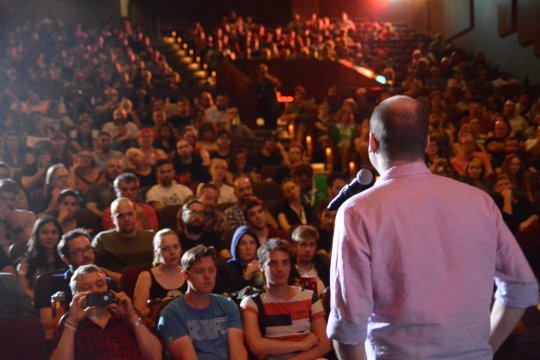

With Mitch Davis, Fantasia's artistic director, Kate Bosworth, and my wife Kate Siegel.
In the years that had passed since we shot Before I Wake, Kate Siegel and I had gotten married. At the premiere, and in the picture above, Kate was pregnant with our son.
We named him Cody, after the little boy in Somnia... the little boy whose dreams came true.
In 2016, Netflix acquired the North American rights to Before I Wake, and quietly dumped it on the service. There was no premiere, no rollout, no screeners sent to critics. One day it just appeared on the service without fanfare, as Netflix does to so many titles.
It didn't even appear on the New Releases tab.
A few critics found the movie on their own, and slowly some new reviews started to trickle out. Bloody Disgusting led the charge, discussing how the film had been wrongfully maligned over the years, and correcting identified it as a "haunted fairy tale" that was being handicapped by the expectations that it was a horror film.
Our tomatometer began to slowly rise. After some time, it tipped out of "rotten" into "fresh"... and today stands comfortably at 66%. Those early, malicious reviews are still there, the movie is still scarred by them... but despite Relativity (and eventually Netflix's) efforts to rebrand the movie as a straight horror film, most critics were able to see it for what it truly was.
Our audience was as well, for the most part. Some viewers yawning their way through the Netflix original horror feature section would find it, and get something maybe just a little more thoughtful than they were expecting. A few people reached out to me to talk about losing their own loved ones to cancer, or about how the sweeter elements of the story impacted them. I've always been grateful for that.
But ultimately, the movie was just brutalized by its studio. I've never again had so much damage inflicted on a project by a creative partner and supposed collaborator. And while Netflix did the bare minimum when it came to releasing the movie, I am still very grateful that that they even did that much... if it wasn't for Netflix picking it up, I think there's every chance Before I Wake would have never been made available at all.
I'm proud of the movie. It's not perfect, by any means - it was an ambitious sophomore effort and I had a lot to learn about a lot of things - but it has some beautiful ideas and some moments that really work. I see its flaws clearly, too, and while I tell myself some were out of my control (like the awkward scares forced on us by Relativity), others were most certainly entirely on me. Not everything works, and that's okay.
But man, Jacob Tremblay is phenomenal in this movie. And I absolutely adore the final ten minutes.
My son Cody is almost 7 now, exactly as old as Jacob was when he was cast to play his namesake. I hope Cody's dreams come true; that's why we named him what we named him.
Sometimes, our dreams don't come true quite how we might expect.
Hollywood is just kinda like that, I guess.
241 notes
·
View notes
Note
who are your favourite artists of the visual variety... painters or digital artists. like whose art makes ur skin crawl and your guts churn in overstimulation
ooh thank you for asking!! i have a lot, but here are the ones who have been on my my mind in particular lately. long post ahead xx
ppp_1215 is a digital artist who does studies of rabbit plushies in unfortunate situations, often being tortured or doing the torturing themselves


holymilkmother is a really great graphite and collage artist that scratches a wonderful itch in my brain, their shit kills
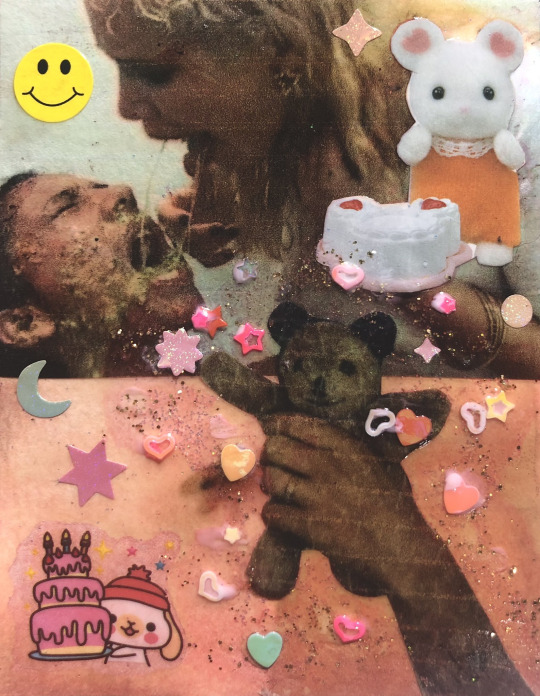

kaneoya sachiko is an amazing digital illustrator and her shit owns
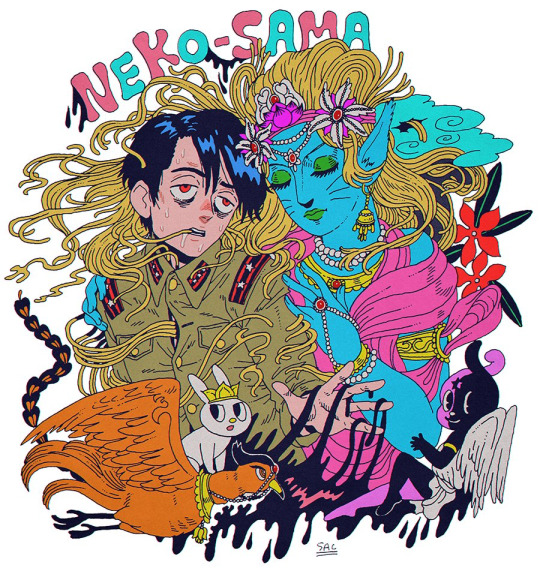
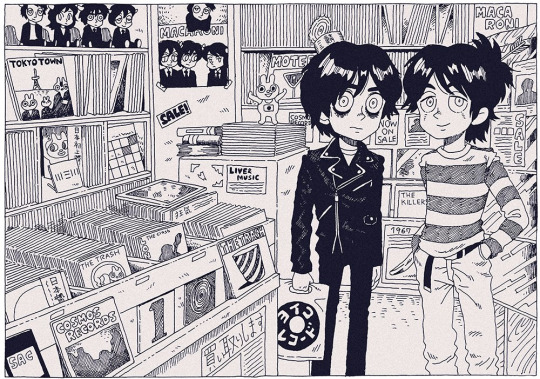
pitch canker is a digital horror illustrator who uses lots of sharp blacks and reds and often discusses a separation of one's self and one's heart, mind, and morals and a lot of his pieces are accompanied by original poetry
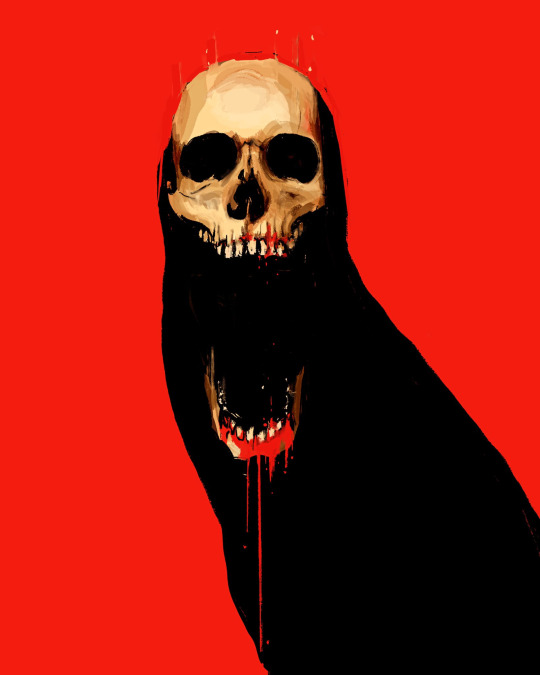
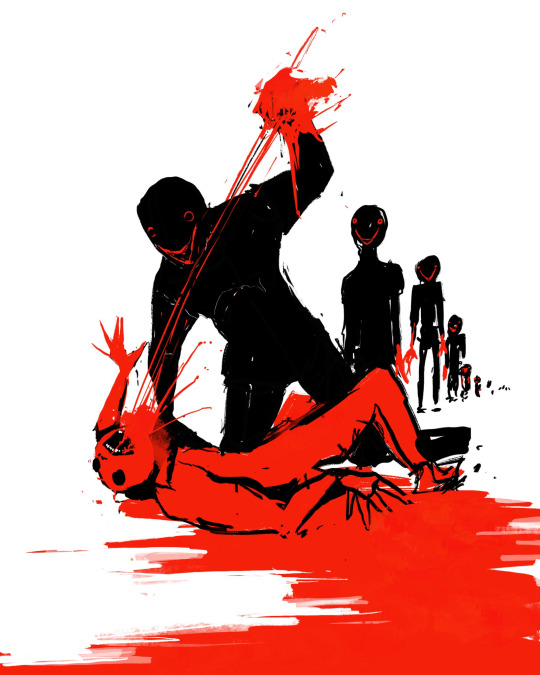
sinnykitt is an illustrator who draws cute military boys and guns and guro and it scratches the most wonderful itch
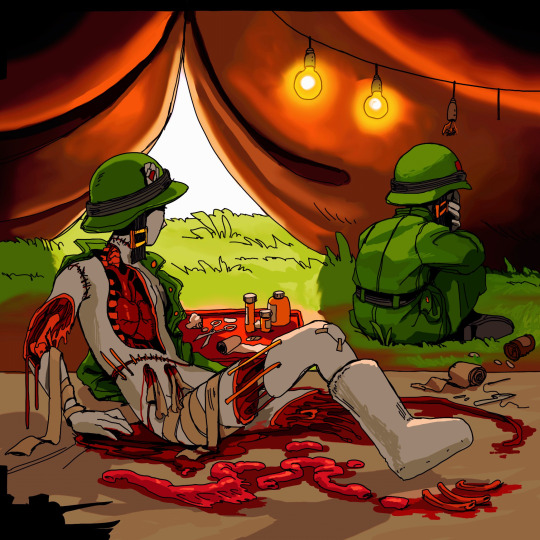

maisie cousins is a photographer and a collage artist who makes really squeamish and colorful images that inspire me a lot


gregory crewdson is one of my favorite photographers ever and he creates really striking americana imagery and finds the darkness and the romance in the harsh realities and familiarity of being trapped inside suburbia
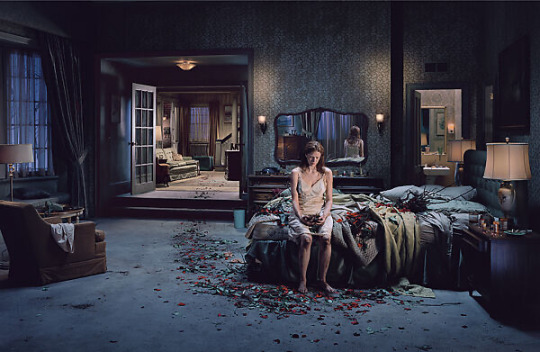
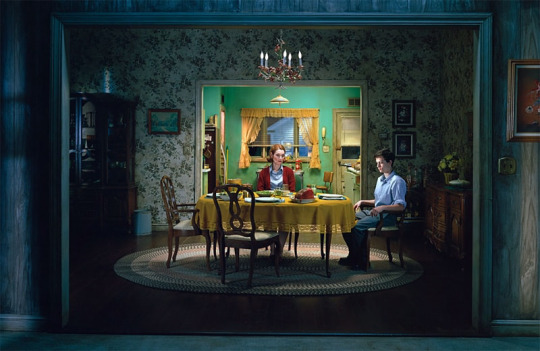
wong ping is one of my favorite artists of all time and he's a 4d artist who does surrealist film, site-specific installations, sculpture, and illustration. his work deals with navigating human contact and emotion in the digital age, the destruction of the nuclear family and family dynamics in general, decay of the self, mental illness, and self-obsession. if you can get your hands on his art book, please do

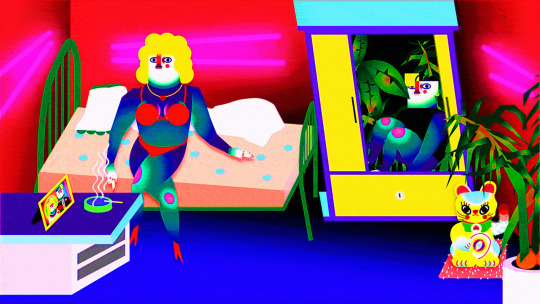
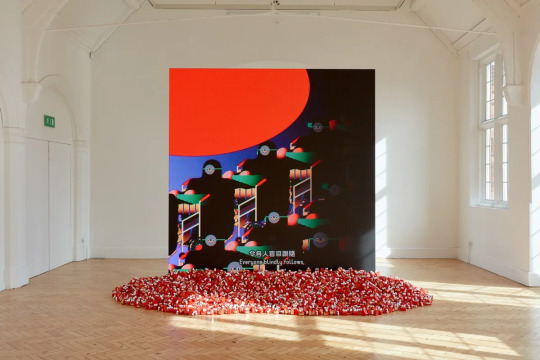
beth cavener is an insanely talented sculptor who creates extremely tactile, fluid pieces of rabbits and other animals in both their natural forms and exhibiting human behavior, usually displaying vulnerability, anger, lust, desire, and adoration



26 notes
·
View notes
Text
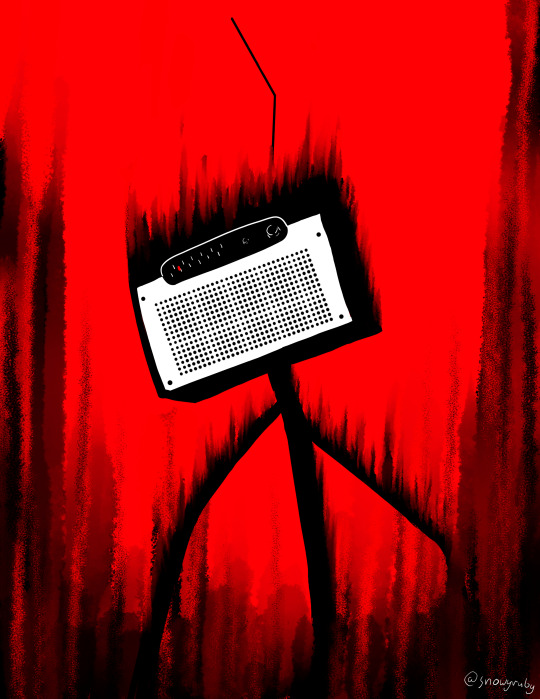
wanted to try drawing the radio person monster thing cause i love them so much, but i didn't know how i'd go about it. I'd like to think this drawing shows redeyes's corruption cause like i'd imagine red eyes made them, and also made them feel the hate that they do, but i also just thought it would look cool so... very inspired by pitch canker's art, i love that style
35 notes
·
View notes
Text
I've been drawing some things for the past few months now and I only just now thought to post my stuff so here's a huge drop of stuff I've drawn
(everything is heavily inspired by Pitch Canker and I did do my own versions of some of his original ideas)










1 note
·
View note
Text

"There's Something In The Woods"
A little style experiment based on Pitch Canker's art
I wanna dip my toe into some horror art and i figure maybe i should do that by studying how some of my favourite horror artists do it!
#lookin4serenity#deer#horror#spooky#horror art#creepy#creepy art#style experiment#artwork#digital art#artists on tumblr
13 notes
·
View notes
